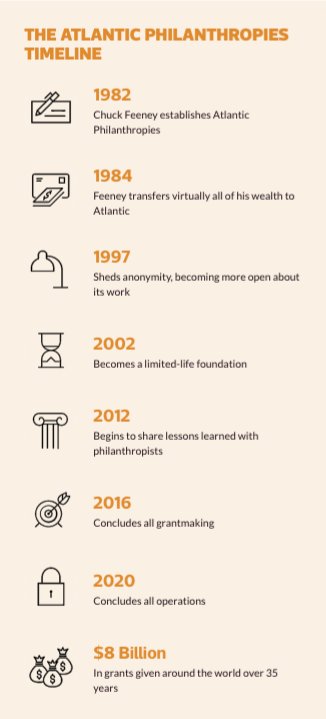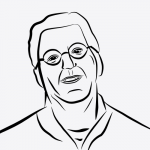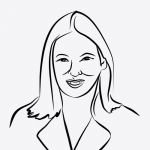Planning for the Afterlife
Resource type: News
Change Agent | [ View Original Source (opens in new window) ]
As Atlantic winds up its work, we’re also laying the foundation for post-life communications. The big question: How will we have influence after the last check is written?

By David Morse and Elizabeth Cahill
At The Atlantic Philanthropies, our communications goals are simple and straightforward. We aim to reach the right people with the right information to influence decisions and actions of those who can help advance our goal of creating opportunity and greater fairness and equity in our social and economic systems globally.
That probably doesn’t sound much different or less ambitious than any other foundation that uses communications to advance its mission and goals. But there’s one thing that makes us different than most other foundations—we don’t have all the time in the world to devote to our communications. That’s because we’re a limited-life foundation that will soon cease to exist. Our clock is ticking and it feels like it’s 11:59.
If you would not be forgotten, as soon as you are dead and rotten, either write things worth reading or do things worth writing.
– Benjamin Franklin
We will make our last grants by the end of 2016 and shut our doors in 2020. When all is over, Atlantic will have invested $8 billion over 35 years, making us the largest foundation in history to purposely put itself out of business.
But just because we’ll be gone, that doesn’t mean we can’t try to continue to influence decisions and actions of people who are in a position to advance the issues and beliefs that have been at the core of our work throughout our history. In fact, we have a plan to do just that. Inside our communications team, we jokingly call it telling “Tales from the Crypt.”
We shed our anonymity two decades ago. But even after publicly revealing that Atlantic had been the source of millions of dollars of grants, mostly to universities and medical centers, the foundation remained relatively quiet and shared little about its work. We became a bit more open after 2002, the year Atlantic formally set an end date for the foundation. At the time, our board recognized that the foundation needed to be more transparent about its work and to more actively promote collaboration among grantees and other stakeholders.
We’ve come a long way since then. Today, strategic communication is key to furthering the foundation’s goals. Much of what previously fueled our communications was our program work and grantmaking–helping grantees communicate more effectively in real time to advance their work. That, too, will be coming to an end soon. So the challenge has been to develop and implement a plan that would continue our communications well into Atlantic’s afterlife, when the foundation is neither running programs nor making new grants. It’s a challenge we’ve undertaken based on audience research and a lot of (hopefully educated) guesswork.
We’ve been working on this plan the past several years, while simultaneously stepping up our day-to-day communications. This work has been occurring as the rest of the foundation has been focused on winding up grantmaking, closing offices around the world, liquidating our endowment, organizing our archives, and shrinking the size of our staff.
It’s ironic, too, that communications is playing such a key role as the foundation is in the midst of its final days. Atlantic, which was founded in 1982, operated anonymously until 1997. Our founder, Chuck Feeney, who co-founded and made his fortune from Duty Free Shoppers, is a modest man who shuns the spotlight. When he first started Atlantic, he wanted the freedom to be able to meet people, talk, learn and make grants without attracting attention or recognition. At the same time, grantees weren’t allowed to tell anyone they’d received grants from us. Those who were tempted to violate that prohibition, risked being asked to give it back.
Having spent more than three decades and over $8 billion in efforts to create opportunity and promote greater fairness and equity for all, we want to believe that time and investment will continue to yield returns well into the future.
So as we set out on this path, we began by asking some basic questions: who cares, and what do those who do care want to know from Atlantic’s experience? What strategies would enable us to make our communications meaningful and impactful, both in our final years and in our post-life? What can we do today to lay the groundwork for serving the needs of future audiences—particularly new and emerging donors who are increasingly considering a limited-life approach, and foundation leaders and program staff—with knowledge that might inform their program work and, more broadly, how they think about their philanthropy? What other partners do we need to engage now who can continue the work after we’re gone?

Here’s where we ended up, and why.
Early in the planning of our final phase communications strategy, we determined that Atlantic’s website would become the main means of sharing the story of our work, even after we’re gone. We also began taking steps to ensure our archives wouldn’t just end up as boxes in storage but could be digitized and made more accessible, both through our website and via whomever we selected to manage them.
We knew from the start that our website at the time couldn’t serve our future needs. It had been built years earlier on a platform that made updating difficult, offered limited functionality, and didn’t fully tell our story. So we needed to build a completely new website, one that would do more than address immediate needs. We had to think long term and design our site so it would continue to be useful even after Atlantic ceased to exist.
As a first step, we posted a survey on our existing website to find out what our web audiences found useful and what more we could offer. We asked the same questions of Atlantic’s staff. We surveyed external audiences who routinely receive news about Atlantic or updates from our CEO. In addition, we commissioned an external research firm to ask influential people in philanthropy and in our fields of work what kind of knowledge they thought that Atlantic could contribute to helping advance both philanthropic and program practice. The outside firm we hired conducted more than 60 hour-long phone interviews in the United States and the regions around the world where the foundation had offices. Interviewees included government officials, representatives of major foundations, grantees, and other “influentials.”
As we set about designing the architecture for our new website, we held workshops with Atlantic leadership, staff, and external experts on digital communications. An analysis of all the findings guided the construction of the new site, which we tested with focus groups run by an outside adviser. Participants weren’t shy about telling us what they thought worked and what didn’t, and what they wanted to find on the site. We made a lot of changes based on their feedback. One of the truisms reinforced for us during this process is that it’s essential to talk to your audiences.
Our new website, which launched in the spring of 2016, has been designed, in the words of one of our board members, so visitors see “the impact of grantmaking and how all the dots of our work over 35 years connect to form a complete picture.” Our website describes our history, details the work we’ve done around the world and the issues at the heart of our grantmaking in each of these places, and shares our most salient insights. Throughout our site, we provide access to our extensive collection of reports, studies and other publications detailing both our work and that of our grantees.
We also devote key real estate on our website to tell the history of our founder, Chuck Feeney, and his belief (and ours) in Giving While Living—the idea that people of means should use them now, and be deeply and personally engaged in their philanthropy, to achieve the social good they seek. Mr. Feeney often says it’s a lot more satisfying to give while you’re living than when you’re dead. And that you can learn from your mistakes and make adjustments.
Why? Our research suggests that philanthropy advisers, other foundations, and emerging donors are increasingly interested in knowing what can be achieved when high-net-worth individuals (a.k.a. the <1%) use their money to make big philanthropic bets during their lifetimes, like Mr. Feeney. They’re curious about Giving While Living and limited-life philanthropy.
Giving While Living is an entrepreneurial approach to philanthropy where you actively devote your money, skills, and time to make a difference sooner rather than later. You can learn and make adjustments to get the biggest bang–and impact–for your buck.
So, from a content perspective, we are seeding and producing online and print publications that address the impact of making big bets for social change. We have also initiated other products that provide insights into how Atlantic has pursued its goals through a combination of philanthropic approaches, such as support for advocacy and strategic litigation, or making major investments in people and communities through capital projects around the world, as well as how the foundation has partnered with and leveraged government engagement and support in areas such as education, health and advancing human rights.
Another set of publications currently in the works will provide a behind-the-scenes look at how we worked in individual countries around the world: Australia, Cuba, Ireland, Northern Ireland, South Africa, and Viet Nam, as well as a series of films about specific fields of work in the U.S.
In the near term, all this information will be our responsibility to distribute and disseminate. So, with shrinking staff, resources and most importantly, time, we have an intense sense of urgency. But we’ve also begun turning over to Cornell University, which has been selected as the home for our vast archives, our digital platforms, and all the content on them. A dedicated archivist will oversee Cornell’s work, which includes managing and updating the website and actively curating content from our archives. So our sense of urgency leads to agency, with our colleagues at Cornell, and others, serving as executors of Atlantic’s legacy.
Our goal is to have influence even after the foundation ceases to exist.
To amplify our ability to inform and influence key audiences, we awarded grants to several partners who are undertaking a variety of information-sharing, convening, and dissemination activities, individually and in partnership with each other.
Atlantic’s end game is an unprecedented experiment in limited-life philanthropy. Because we’ll be gone in a few short years, we won’t be here to see firsthand if our post-life communications plan works. But if it does, it will be a demonstration of how even a foundation that no longer exists can still have influence.

David is Chief Communications Officer for The Atlantic Philanthropies. His responsibilities include developing and managing communication strategy for the organization. Mr. Morse counsels senior leadership on a broad range of strategic external communications, media, and other issues, and oversees program and legacy communication initiatives and the website.

Elizabeth is Director of Digital Communications for The Atlantic Philanthropies. Ms. Cahill oversees strategy and development of Atlantic’s website, social media, and other digital communications. In Atlantic’s final phase, Ms. Cahill is focused on efforts to share Atlantic’s story and insights through its online platforms. She also manages several communications grants.